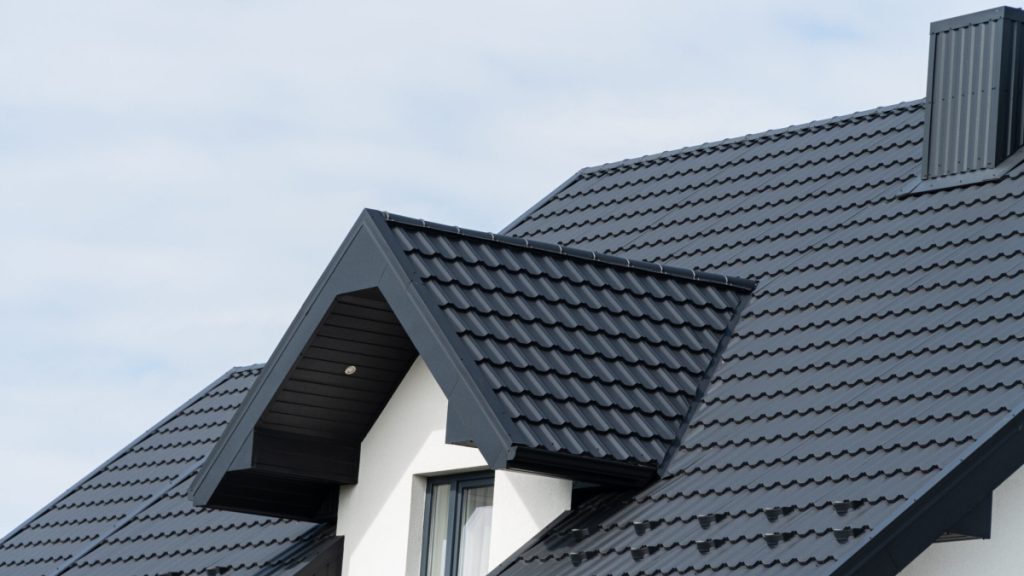Metal roofing, also termed steel roofing, constitutes sheets or tiles crafted from metal. Its rising demand in roofing results from its strength, lastingness, and energy effectiveness. This type of roofing offers formidable defense against severe weather like strong winds, heavy rain, snowfall, and hailstorms.
Additionally, it is resistant to fire, rot, and insect damage, making it a highly durable option for homes. Yet, it’s crucial to weigh the pros and cons of metal roofing beforehand. Although metal roofs boast impressive durability and energy savings, their initial cost might exceed that of alternative roofing options. Our Durango roofing contractor specializes in installing high-quality metal roofing systems for residential and commercial properties.
So if you’re wondering what is a metal roof, and why are metal roofs better, our Durango roofing contractor will provide all the metal roofing information that you need.
Types of Metal Roofing Materials
Metal roofs come in various materials, each possessing distinct characteristics that affect how they perform and look.
Steel Roofing
Steel roofing is renowned for its robustness and durability, making it a popular choice for various architectural styles. Available in different gauges, thicker gauges offer enhanced strength and longevity. Steel roofs are resistant to fire, rot, and insect damage, providing long-term protection for homes in diverse climates.
Aluminum Roofing
Aluminum roofing offers a lightweight and corrosion-resistant option, ideal for coastal or humid environmentsAluminum roofs are a sustainable option for homeowners because they require little maintenance and last a long time. They can be shaped into detailed designs and reflect sunlight, which helps save energy.
Copper Roofing
Copper roofs are admired for their classic charm and the beautiful patina they develop with age, adding to the attractiveness of any house. Beyond its visual charm, copper roofs are incredibly durable and weather-resistant, capable of lasting for centuries. While initially more expensive than other metals, the longevity and low maintenance of copper make it a wise investment for discerning homeowners.
Zinc Alloys Roofing
Zinc alloys, such as titanium-zinc or zinc-aluminum, offer unparalleled durability and resistance to corrosion. With a lifespan of over a century, these roofs offer a sustainable and enduring roofing option. Additionally, zinc alloys develop a protective layer over time, further enhancing their resilience against the elements. With their exceptional performance and environmental benefits, zinc alloy roofs are gaining popularity among an eco-conscious homeowner.
Advantages of Metal Roofing
Durability: Durability is one of the important benefits of metal roofs on houses. They can endure tough weather like heavy rain, snow, strong winds, and even hailstorms. Their sturdy construction and resistance to corrosion mean they can last 50 years or more, providing long-term protection for your home without the need for frequent repairs or replacement.
Energy Efficiency: If you’re thinking ‘why metal roof’, energy efficiency is another great advantage they provide. By reflecting sunlight away from the building and reducing heat absorption, they help keep indoor temperatures cooler, especially in hot climates.
Easy to Manage: Metal roofs need little upkeep compared to other types. They don’t demand frequent cleaning or repair like traditional materials.
Eco-Friendly: Choosing metal roofing helps the environment as it often comes from recycled materials, lessening the demand for new resources and reducing waste.
Common Styles and Designs
Standing Seam: Standing seam metal roofing utilizes vertical panels that lock together tightly, forming a secure seal against water infiltration. This style is known for its sleek, modern appearance and clean lines. This style is widely used in homes and businesses, prized for its strong construction and ability to withstand various weather conditions.
Corrugated Panels: Corrugated metal roofing consists of long, wavy panels with alternating ridges and grooves. This style has a distinctive industrial look and is often used in agricultural and commercial applications. metal roofing panels are lightweight and simple to install, offering dependable defense against weather elements.
Metal Shingles: Metal roofing tiles mimic the appearance of traditional roofing materials such as clay or slate tiles but offer the added benefits of metal, including durability and longevity. Metal roof shingles resemble classic roofing materials like clay or slate but provide the strength and durability of metal. They come in diverse shapes and styles, allowing homeowners to personalize the appearance of their home. Additionally, these shingles are available in a wide range of colors and textures to suit various architectural designs.
Cost Considerations
The cost of installing a metal roof depends on various factors:
Material Selection: Different metals like steel, aluminum, copper, or zinc alloys can influence the overall cost. While some metals may cost more initially, they could provide better durability, reducing maintenance expenses over time.
Roof Size: The size of the roof determines how much material is necessary for installation. Larger roofs require more roofing panels and accessories, leading to higher costs.
Complexity of Installation: The complexity of the roof’s design, such as its slope, angles, and features like skylights or chimneys, can affect installation difficulty and labor costs. Installing a complex roof design might take longer and need more specialized skills, leading to higher installation costs overall.
Conclusion
In short, metal roofing is a great pick because it has many advantages. It has a long lifespan, requires minimal upkeep, and is energy-efficient. Even though it might cost more upfront, it’s worth it in the long run because it’s strong and eco-friendly. Metal roofing is a smart and affordable option for homes and buildings. So if you’re wondering what is metal roofing, contact us to avail all the metal roof information.




